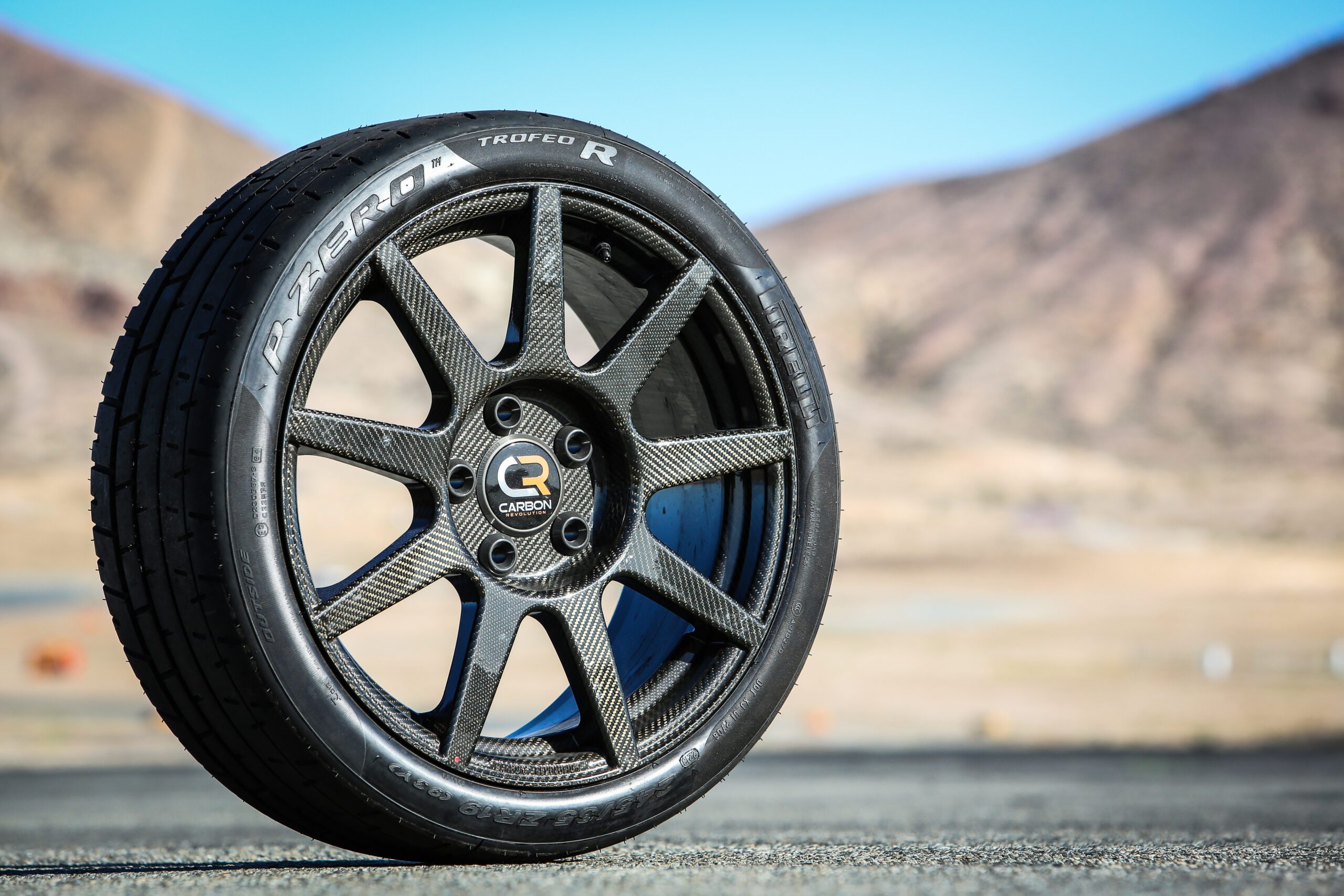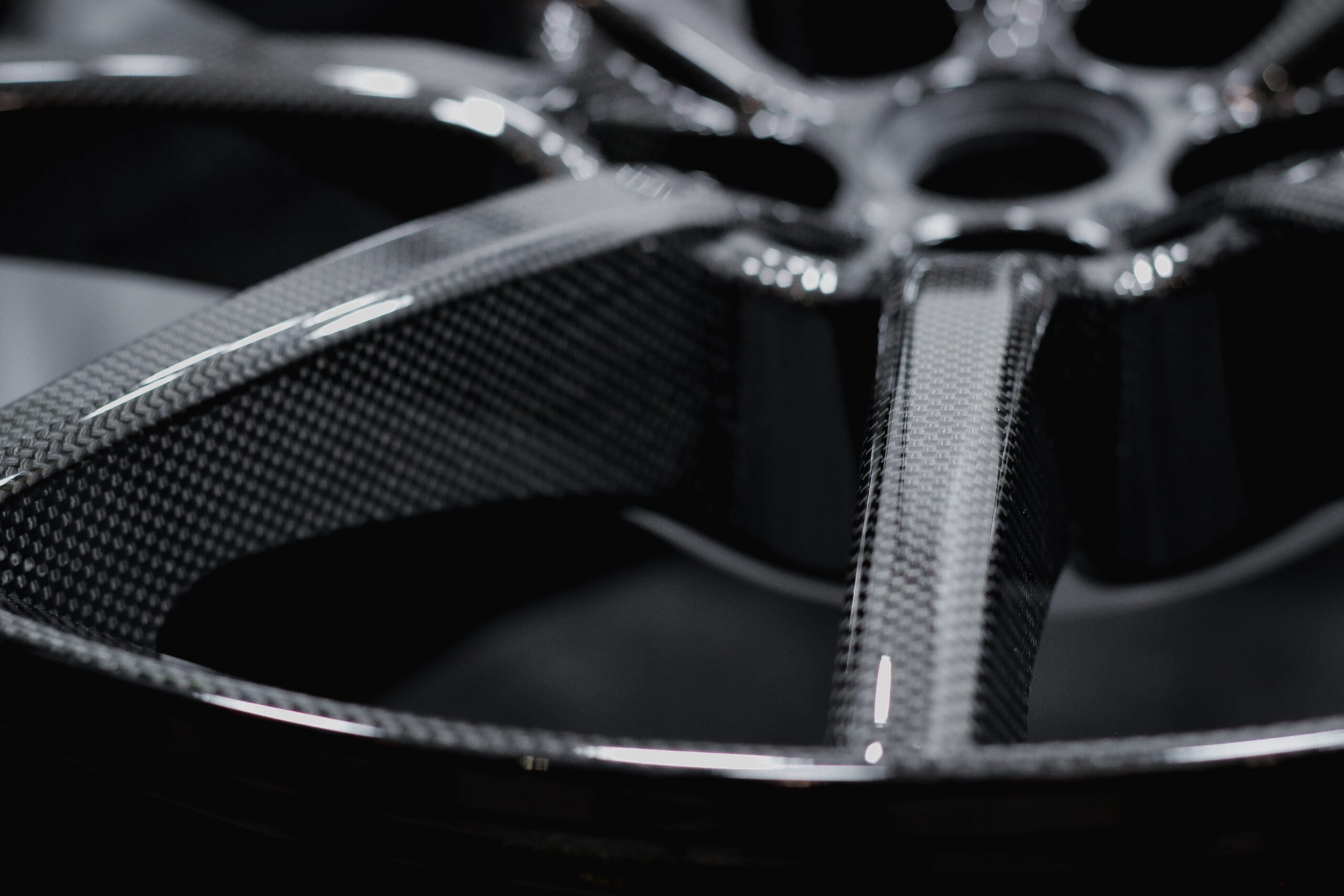
Frequently Asked Questions
Construction
Carbon Revolution carbon fibre wheels are between up to 40-50% lighter than aluminium wheels.
Carbon fibre is much lighter and stronger than aluminium, which means we can add a small amount of mass to reinforce our wheels and make them even stronger, while still being lighter.
It is a similar process used in the manufacturing of certain aerospace and Formula 1 parts. Carbon Revolution has proprietary and confidential wheel process IP that is unique to our wheels. Our carbon fibre wheels are manufactured in a state-of-the-art production environment that is ISO Quality Certified.
The barrel, spokes and hub face are all carbon fibre. Aluminium is used for the replaceable hub/backing plates and cone seats for the lug bolts/nuts.
To optimise stiffness, weight, and durability our wheels are manufactured as one single piece of carbon fibre composite. The face, spoke, and barrel are a continuous structure. Carbon Revolution wheels are not bonded, glued, or bolted together.
Carbon fiber wheels are quieter than metal wheels! Carbon fibre has a much higher damping characteristic than aluminium. As a result, using carbon fibre as a wheel material significantly reduces noise transmitted to the cabin of the vehicle.
Not in our wheels. Our wheels are designed to withstand all kinds of tensional and torsional forces in different directions. Some extremely lightweight carbon fiber parts, such as the wing of a Formula 1 car, are designed to be extremely light and only need withstand a unidirectional force – downforce. When a different force is applied such as an impact from another vehicle, the carbon fibre often breaks. Compared to a lightweight aero component like a race car wing, our carbon fibre wheels are far more robust and heavy in their construction (but still much lighter than steel and aluminium wheels). We design our wheels to meet or exceed OEM metal wheels’ levels of strength, impact resistance, and durability at a fraction of the weight.
Carbon Revolution wheels have been tested in labs, and on roads and tracks across the world to ensure they perform extremely well in all conditions. Our OEM customers don’t bend the rules of testing for us, and we wouldn’t want it any other way.
Care and Maintenance
Most mid-grade and high-end tyre changers should have no problem servicing Carbon Revolution wheels, if the operator uses the same due care they would for any premium wheel.
Our friends at Hunter Engineering have put together this helpful video to answer all of your questions and show you how to go through the service process, and change tyres without causing any damage to the rim
If you have any questions about caring for our wheels, contact your local authorised dealership or contact us.
All of our wheels are painted – the top layer is always a clear coat. Any shop can repair minor scrapes to this clear coat layer. For more significant curb rash damage where the top aesthetic layer of the wheel has been disrupted, but the structure of the wheel has not been compromised, our wheels can be repaired through a specialist carbon fibre repairer. Spyder Composites has repaired hundreds of Carbon Revolution wheels to a very high standard.
Contact us directly if you are unsure about damage to your wheels.
No, only mild soap and water should be used on carbon fibre wheels. A good rule of thumb is; if you would not use it on the paint of the car (fender, hood, etc.) do not use it on the wheels.
Orders
Our carbon fibre wheels are only sold by our OEM customers or through their official parts channels. We are not able to sell our OEM wheels directly to the consumer. We are not currently selling to the aftermarket as we are focusing on OEM supply.
Due to the unique methods used to manufacture carbon fibre wheels it is not possible to produce custom ‘one-off’ or low volume wheel sets to order. The engineering and tooling costs make this uneconomical.


